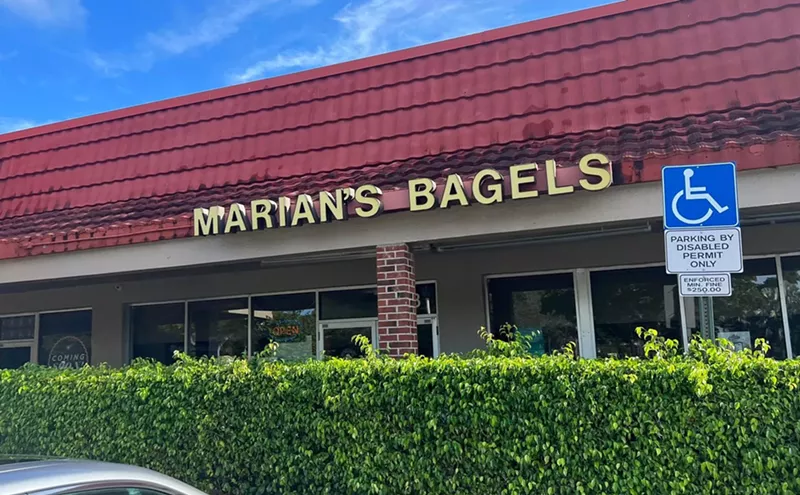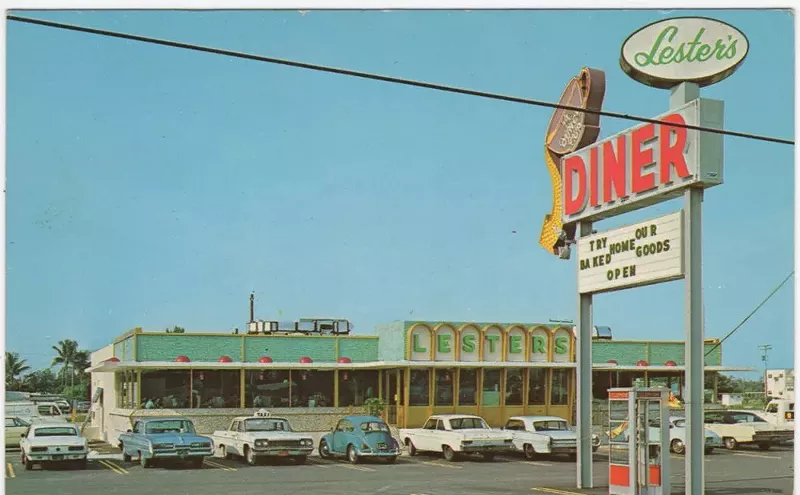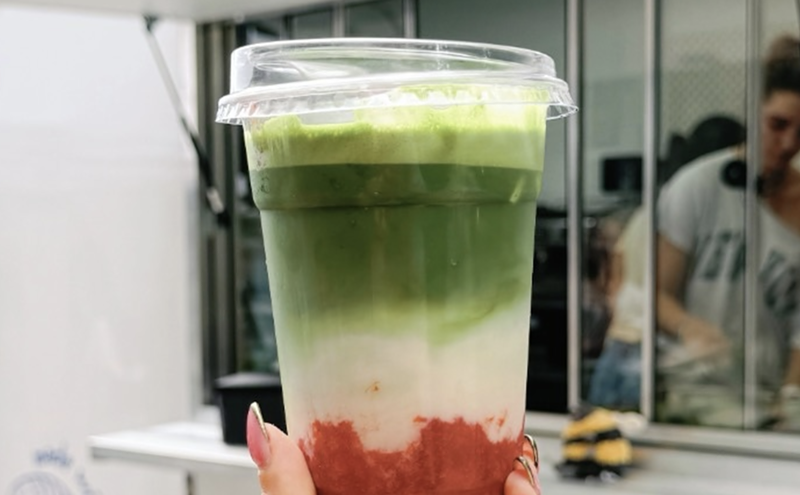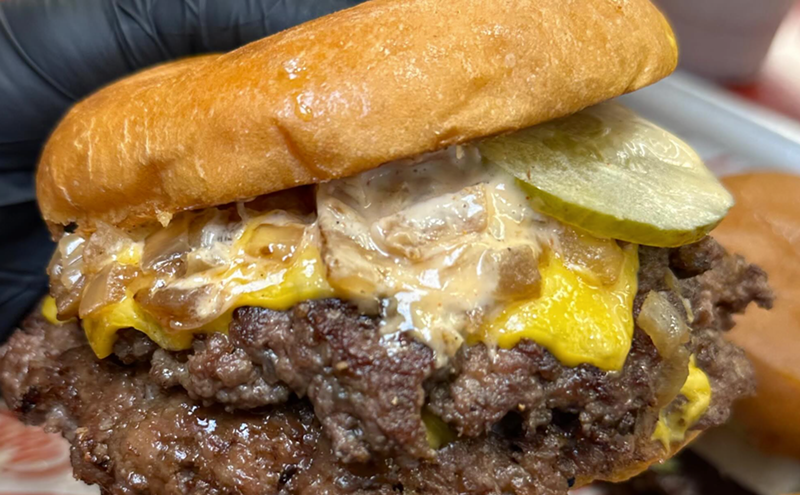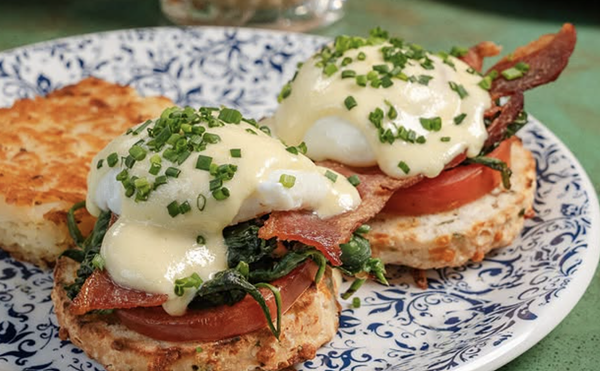Miami is the hardest place in America to open a restaurant.
"But wait," one might respond. "What about the fierce rents and competition in places like New York City, Chicago, and San Francisco?" None of them has as finicky, diverse, and downright unpredictable customers as Miami.
That brutal truth has pummeled Jason Weisberg, who owns the 2-month-old Paulie Gee's Miami, since he opened the 80-seater in a Biscayne Boulevard building that last housed a Chinese restaurant.
Some nights, diners have been rattled by the eatery's choice to serve wine in water glasses rather than the usual stemmed bubbles. "They think they're being robbed," he says.
And from the beginning, visitors disapproved of the policy of refusing to pack pizzas to go. "I've had people come in screaming that we don't do take-out — prominent people," Weisberg says, though he declines to provide names.
A pie is stretched, dressed with toppings, and popped into the 1,000-degree wood-burning oven.
tweet this
The genesis of all this discontent, though, is the stuff of legend. For nearly three decades, Paulie Gee's founder Paulie Giannone toiled in corporate America as an IT manager for companies such as AT&T and Lucent. In the mid-1990s, a visit to the Coney Island pizza joint Totonno's sparked his passion for simple, wood-fired pies. In the years that followed, he began a heroic tour through New York City's pizza culture while building a wood-fired oven in his backyard to test recipes. In March 2010, he opened his namesake pizzeria in Greenpoint, Brooklyn. Five months later, Oliver Strand, writing in the New York Times, declared Paulie Gee's a herald of the city's "golden age" of pizza.
Then, in 2013, pizza lovers nationwide rejoiced when Giannone announced he would franchise outposts of his celebrated pizzeria across the nation. Baltimore, Chicago, Las Vegas, and Portland were all eyed as potential locations.
In the beginning, Giannone wasn't interested in Miami, but Weisberg, who was working nights at Paulie Gee's in Brooklyn and had a backstory similar to that of the boss, wouldn't stop talking about it. He grew up on Long Island's North Shore and as a kid spent summers in Miami. His career as a self-described pizza geek began at a young age when he and his sister would visit their father in Manhattan and spend days bouncing between pizzerias and Italian red-sauce spots.
He ended up becoming an equity trader in his family-owned financial firm but never shook the pizza bug. Then, one night at a friend's birthday party at a New York pizza place, the owner said he had been married at Paulie Gee's.
"Another mutual friend who had worked on Wall Street and was working there said he'd introduce me [to Giannone]," Weisberg says. In the miserable years after the economic recession, that was all the push necessary.
In 2013, Weisberg began volunteering nights at Giannone's Greenpoint pizzeria, grinding tomatoes, shredding cheese, and slicing soppressata to learn the trade. "I told Paulie if I liked it, if I developed an aptitude for it, I'd open a place," he says. He dragged Giannone to Miami a handful of times, browsing neighborhoods across the city before finally getting him to agree and sign a lease on the building, located near Miami Shores, El Portal, and the Upper Eastside.
The result is a place dripping with garage-mechanic hipness. Classics from the Doors blare from the speakers in a drab dining room on the building's north side. Paint-chipped ceiling beams loom over gray tables and yellow steel chairs. On the other end of the restaurant hangs a jaundiced light-up sign for China Palace Restaurant, which last occupied the building. Adjacent is a mosaic sign that reads "Size matters," and off in a corner sits a blinking pinball machine of the Whoa Nellie! Big Juicy Melons variety.
Yet the focal point is obvious. It's the blue-and-white Stefano Ferrara pizza oven — the McLaren of pizza ovens — flanked by a towering stack of split wood. Nearby sit more than a dozen 25-pound sacks of Caputo 00 flour, a must for a true Neapolitan pie, according to Italy's Associazione Pizzaiuoli Napoletani.
The need to store the flour on the floor and near the oven was one of the first hard lessons Weisberg and his cooks learned. Miami's stifling heat and humidity can wreak havoc on high-test flour, increasing its water content and dashing the possibilities of a perfect pie.
"We keep the air conditioning set a certain level in that area," Weisberg says. "We want to control the temperature and environment around that flour; otherwise, the pizza doesn't come out right."
The dough is a simple conglomeration of flour, water, yeast, and salt that's mixed and left to rise for about three days. It begins in a large batch, allowing the yeast to ferment, before it's portioned, shaped into balls, and left to rise again in hopes of achieving the ideal texture.
After an order is submitted, the dough is stretched, dressed with toppings, and popped into the 1,000-degree wood-burning oven for 60 to 90 seconds. The result is gorgeously marred with dark spots like a cheetah's coat. The interior of the pie is thin enough to tear with ease but sturdy enough to withstand all the add-ons.
Only the outside of the crust needs work. It's dense and too chewy. By the end of a meal, your jaw is left aching. Considering the prices for some of these pies approach $20, and the competition from places like Lucali, Ironside Pizza, and Visa-O1, it's an issue that needs to be fixed soon.
On the other hand, Paulie Gee's topping combinations are clever clinics in flavor contrast — like sweet and salty. The Cherry Jones is littered with Gorgonzola and dried Bing cherries, shrouded with prosciutto, and then dotted with orange blossom honey. The musty cheese, the cherries' sour tang, the ham's salt, and the honey's sugar all sing in unison to create a slice that tastes like nothing else in town.
The pleasure dome that is the Monte Cristo takes the salt and smoke of a mild Gouda and pairs it with candied bacon and a touch of maple syrup. It sounds a bit overwhelming, but the savory and sweet fall perfectly in line.
Ascetics might enjoy the Brian DePalma, topped with only tomatoes and Parmigiano-Reggiano (add speck for four bucks), but would fare better ordering the Greenpointer, named for the pizzeria's original location. It's almost as simple but subtracts the tomatoes and adds biting baby arugula, milky mozzarella, and a drizzle of lemon juice for an elegant pie.
Octopus' Garden puts an oceanic spin on a similar offering. Tender yet crisp-edged coins of the cephalopod sit atop a veneer of mozzarella topped with garlic and arugula. Here, a dash of that lemon from the Greenpointer would have worked well; however, the sweet octopus with a pop of salt has enough legs to stand on its own.
Starters are just as simple and pleasurable. In a nod to the space's former life, the Sunburnt Sausage arrives on a red plate ringed with Chinese characters and piled with fennel and fatty goodness. A brunoise of fresh shishito peppers adds blistering heat, but a mound of creamy ricotta cools it. The Cheek Corea salad is one to order alongside the pies. The refreshing potpourri of chickpeas, fennel, escarole, basil, and lemon juice seasoned with musty guanciale is an ideal accompaniment to the Hellboy, the chain's signature pie. It's one of the few here with tomato sauce, and it's topped with hot soppressata, spicy honey, and shaved Parmigiano-Reggiano. It's one you'll either return for or try to mimic at home.
Still, Weisberg says customers have bemoaned the restaurant's refusal to customize pies. It's not a question of being militant, but more an issue of streamlining the kitchen in hopes of creating a product to match lofty expectations. "There are already 20-plus pies with many different topping variations, and when you throw in customization, it becomes almost infinite," he says. "It can screw up the chorus in the kitchen, and ultimately the pizza."
Weisberg's compromise is called Keep It Simple Stupid. It's a plain tomato-and-mozzarella pie to which patrons can add sausage or prosciutto for a price.
Packing pies to-go is another concession the restaurant is considering, even though Paulie Gee's in Brooklyn in 2014 made no take-out a policy. "Our pies are best enjoyed in our restaurant, right out of our oven," Giannone wrote on Instagram, noting that a hot pizza steaming in a cardboard box ruins the crust.
Weisberg says he's testing how to make the dough better suited for takeout. However, that business will never trump the guests dining in. "If we're too busy in the restaurant, we'll shut down takeout," he says.
Still, the idea of the customer always being right may not lead to the best pizza. What will, though, is getting that crust to a point where its crunchiness, airiness, and chewiness can coexist in perfect harmony. And for those who still don't like it, there's always Domino's.
Paulie Gee's Miami
8001 Biscayne Blvd., Miami; pauliegee.com/miami. Monday and Wednesday through Saturday 6 to 11 p.m., Sunday 5 to 10 p.m.
- Sunburnt Sausage $12
- The Cheek Corea $11
- Greenpointer $16
- Octopus' Garden $20
- Hellboy $17
- Cherry Jones $19Monte Cristo $17
- Keep It Simple Stupid $15



